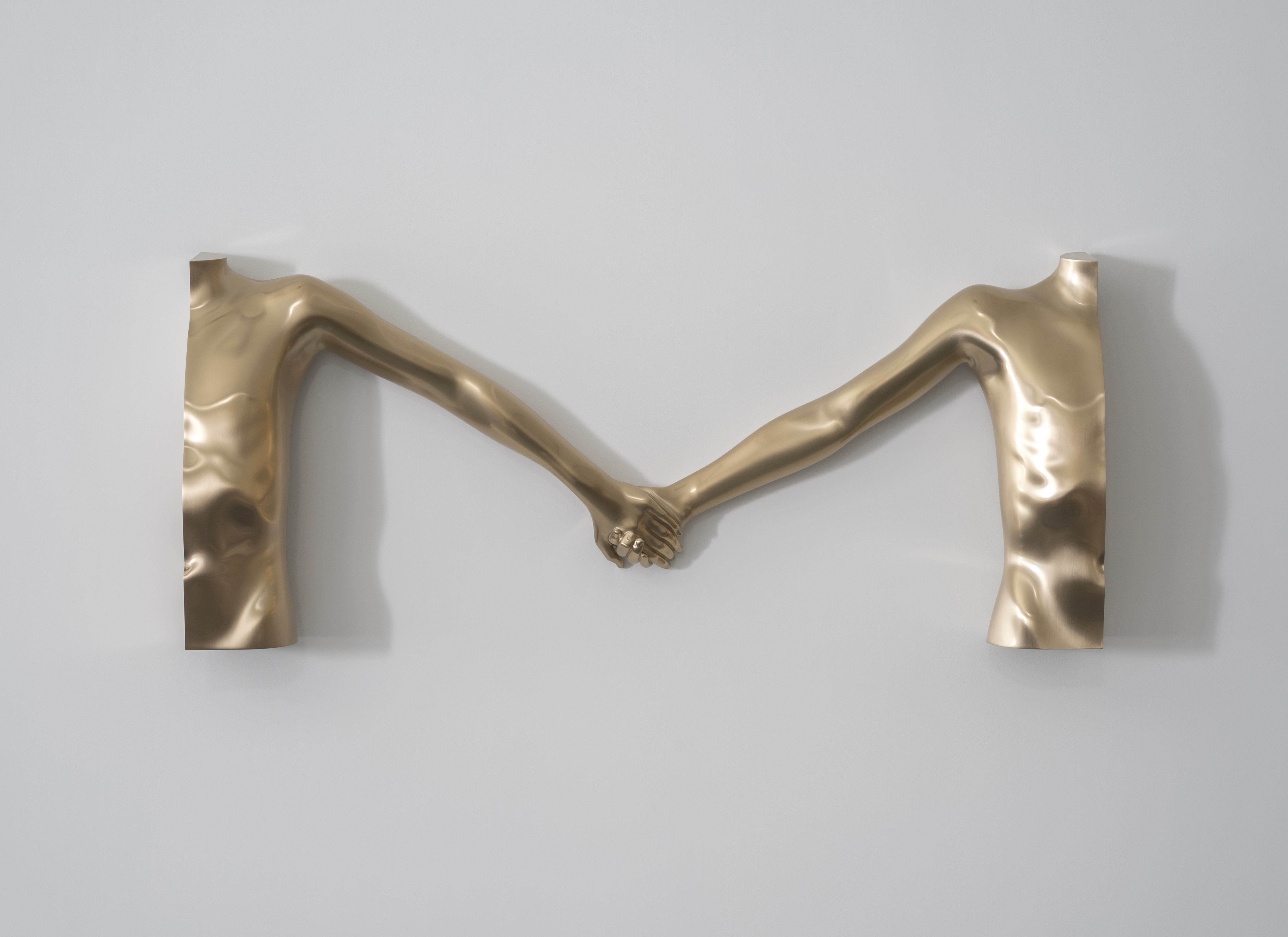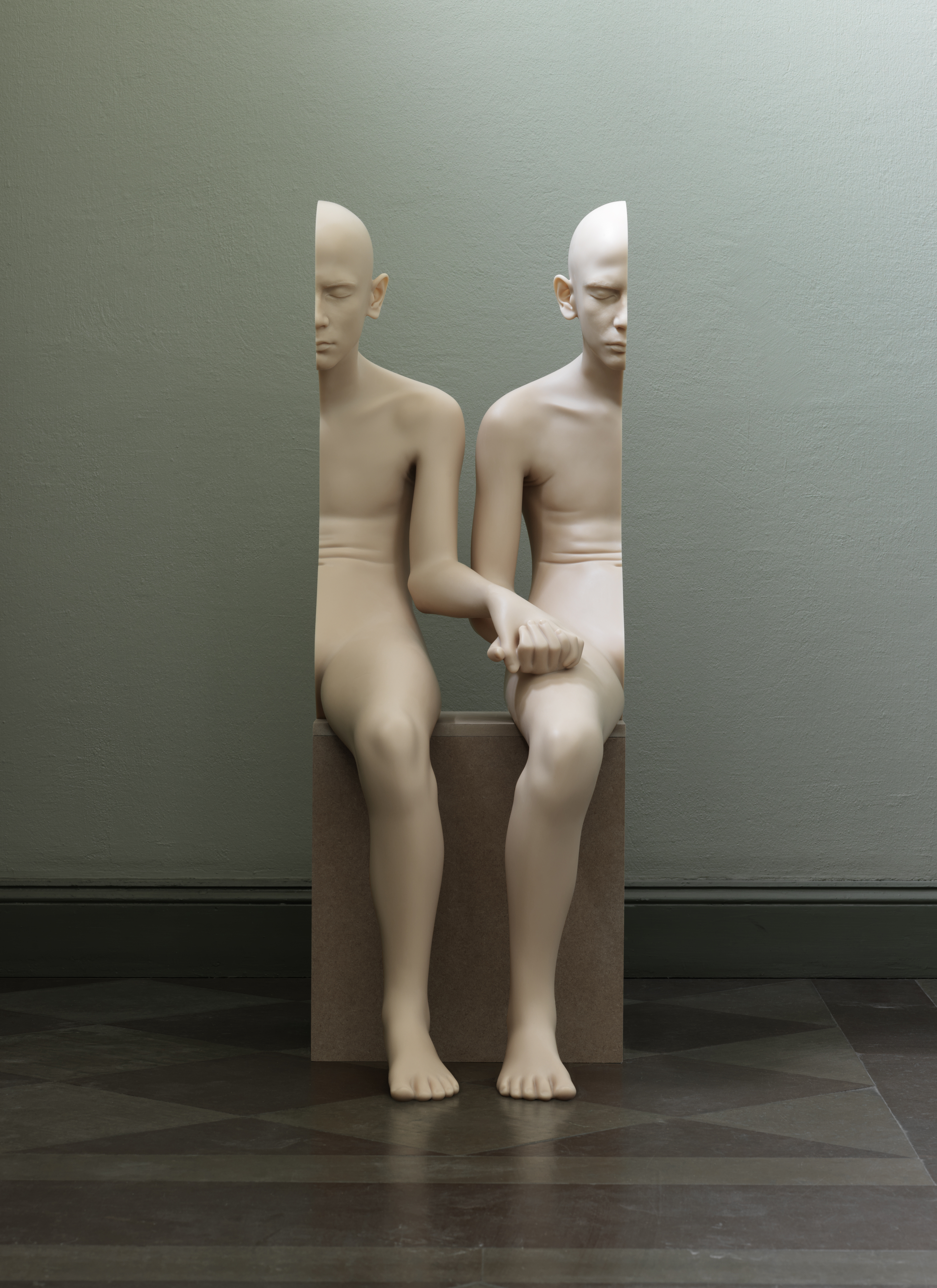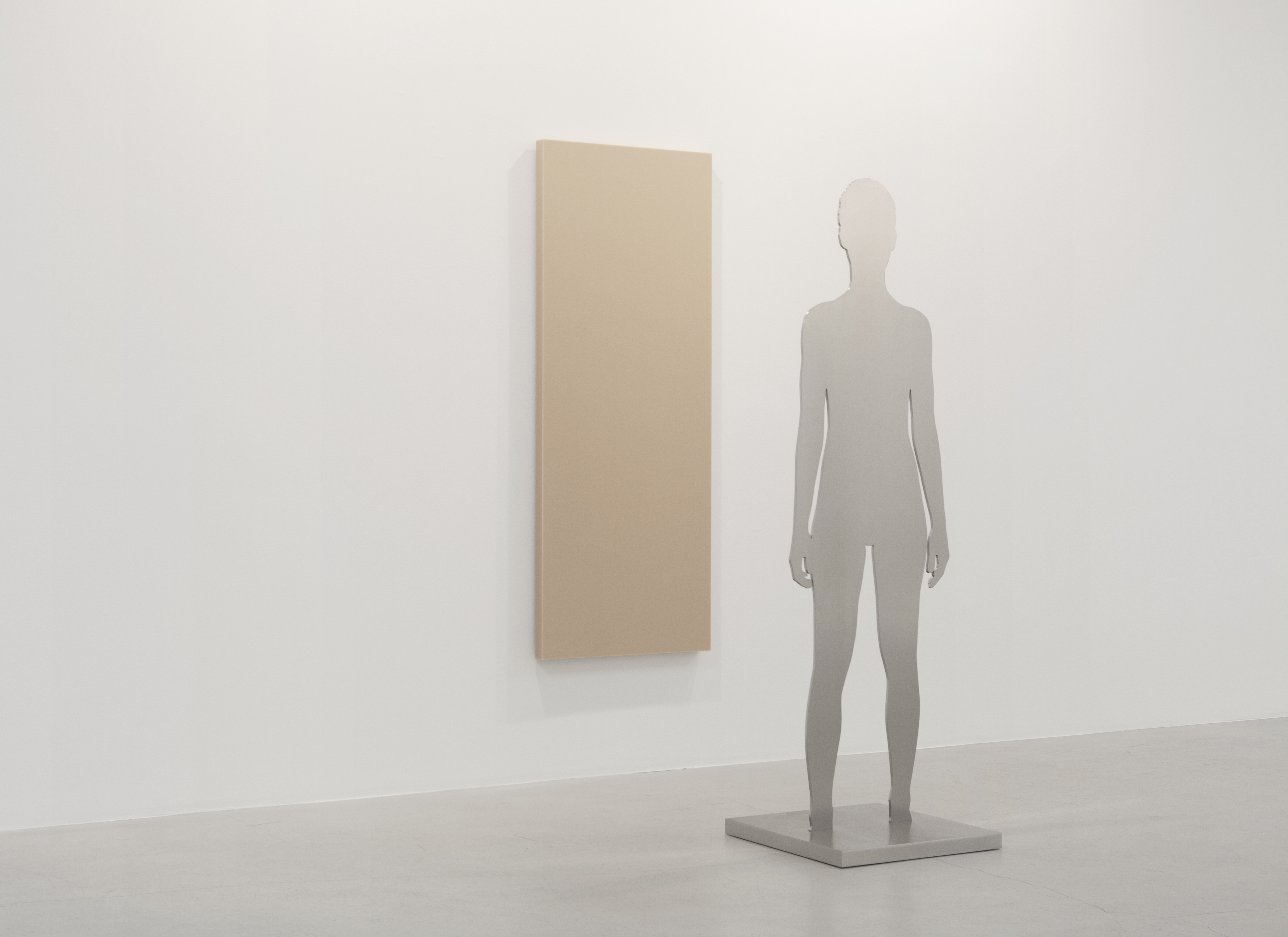
Anders Krisár, ‘Half Boy’ (bronze), 2014–15. All images courtesy of the artist and Christian Larsen Gallery.
- By
- Kevin Greenberg
ANDERS KRISÁR
Looking at the pristinely polished work of the artist Anders Krisár, it is hard to guess that he is largely self-taught and that his path to the visual arts was a meandering one that began with interests as diverse as graffiti, musical composition, and professional chess. Krisár only narrowed his vision to his current path when he was nearly thirty. Since then, he’s had a strong series of well-reviewed shows at international galleries far beyond his native Sweden.
Krisár’s work is striking for the way that it simultaneously mirrors and disrupts reality. Much of his practice is focused on hyperrealism; his full-scale figures, rendered in fiberglass and polyester resin, are expertly cast and crafted to resemble their living counterparts. He then incorporates a series of radical gestures that divorce his subjects from the world we inhabit—impossibly splicing, bisecting, or weaving their monochromatic “flesh”—alienating them from the viewer even as their humanity remains disturbingly intact.
“I mix intuition with precision,” Krisár notes. “My process is quite old fashioned. At the studio, most of the sculpting and polishing is made by hand. I don’t sketch much but make many decisions on the spot, for example, when I cast the models. The production of editions, on the other hand, is very controlled.”
Control, anticipation, patience: Krisár’s working process mirrors the virtues of a veteran chess player, and fittingly so. Since his youth, Krisár has sought to master the most sophisticated game of strategy, and as his understanding of the logic of chess has evolved, it has crept into his artistic practice in ways both symbolic and literal. In some instances, he has even incorporated the language of chess, with its particular, unmistakable iconography, into his sculptural pieces.
There is an undeniable element of the uncanny to Krisár’s output. Like the work of Ron Mueck, Krisár’s figures are eerily realistic enough to be unsettling when you encounter them in a gallery setting. Unlike Mueck’s out-of-scale simulacra, with their ruddy cheeks and individual hair follicles, Krisár’s subjects stand mute and monochromatic, altered in ways that invite the viewer to contemplate the limits of human physiognomy and morphology—indeed, even existence itself.
It’s all a part of the artist’s process: “I work a lot with polyester resin, which is a very stable and reliable material,” he says. “However, during casting, it can be very unpredictable if you don’t treat it just right. Another material that I love is polished bronze. It’s really spectacular but needs endless hours of fine-tuning and polishing.”
Krisár handles both materials deftly, and the way his works interact with their natural surroundings underscores the uneasy way they flirt with the real. As to whether he considers his work to belong to the figurative or abstract tradition, or something else altogether, Krisár smiles, noting that the work defies easy categorization. “Honestly, I’ve never thought about that,” he says. “I guess it could be both, depending on the work (and the viewer).”
Collectors increasingly clamor for Krisár’s work, but for the artist, it’s the long game that matters. As things return to normal after a recent solo show at Choi & Lager gallery in Köln, Germany, Krisár will begin composing himself for new exhibitions and new series, but in the meantime there’s the quotidian routine of the studio to tend to. Despite the rarified appearance of the finished product, Krisár’s work demands the daily attention required of any fine craftsman.
“I will begin a series of new sculptures this fall,” he notes. “And then, of course, there is always the constant grinding and polishing at the studio to finish work to send off.”
- By
- Kevin Greenberg




















